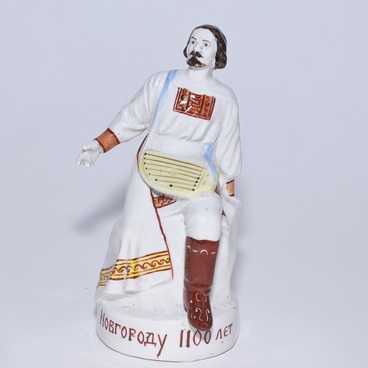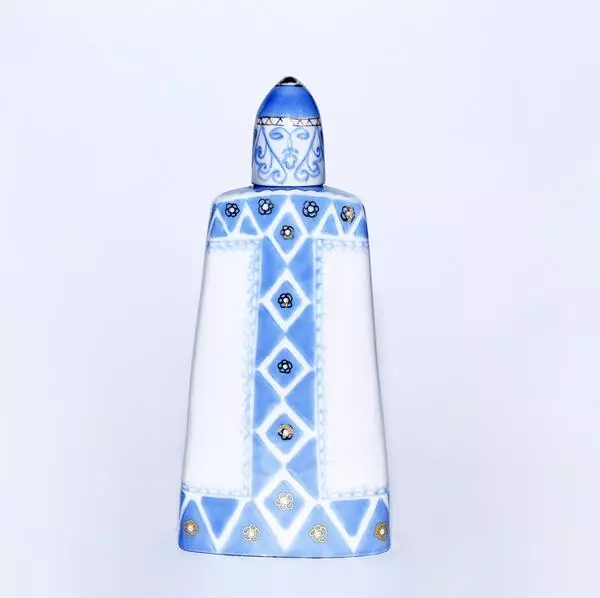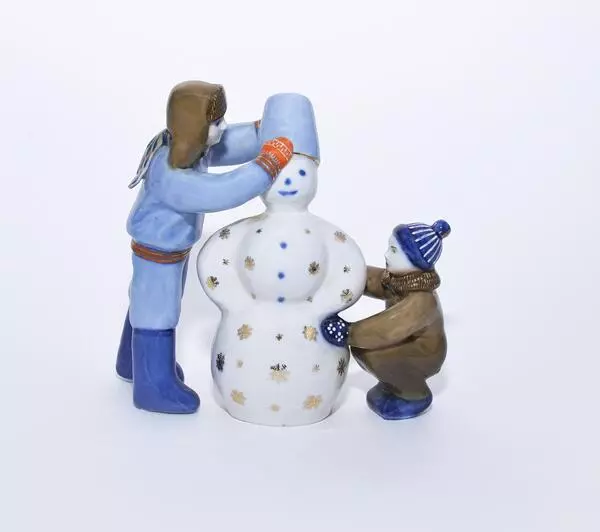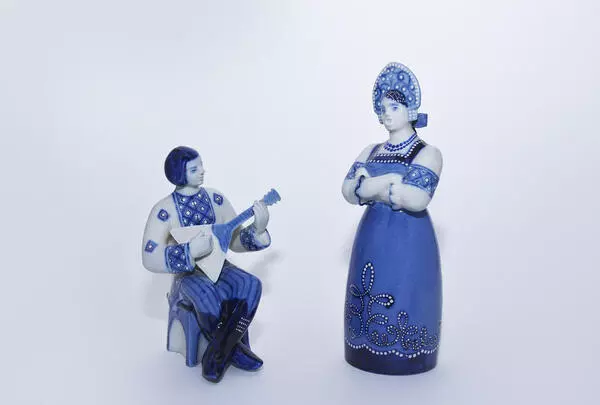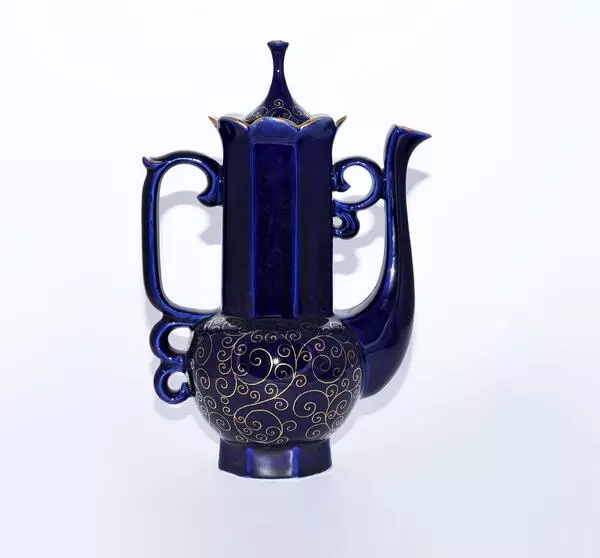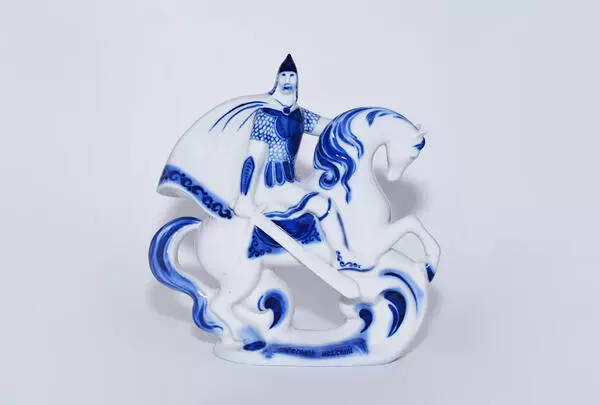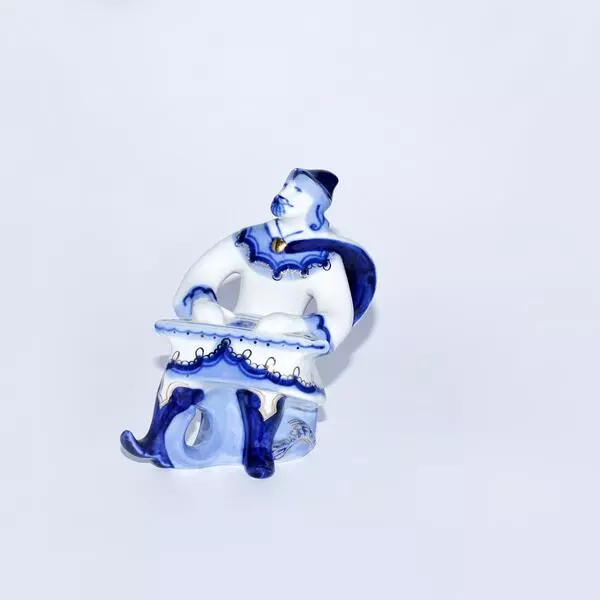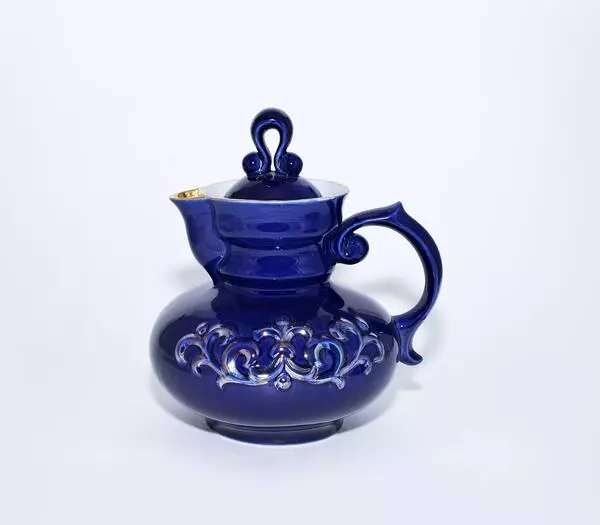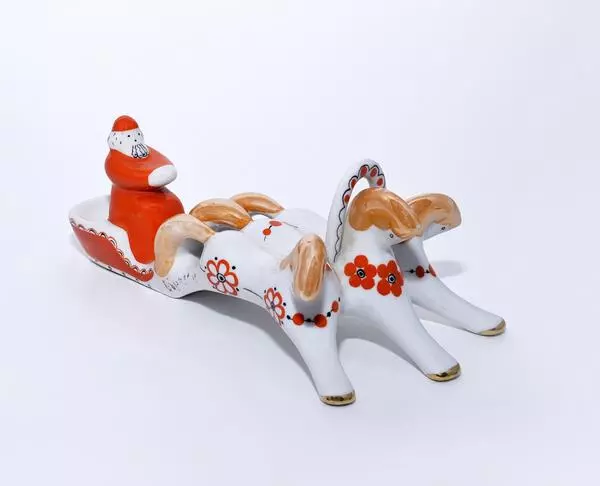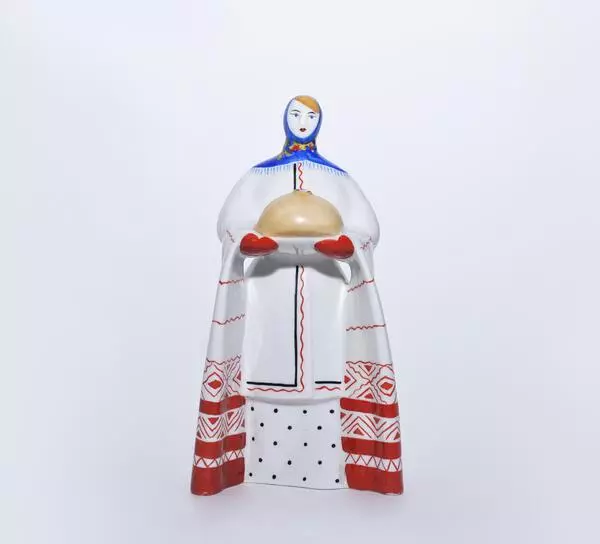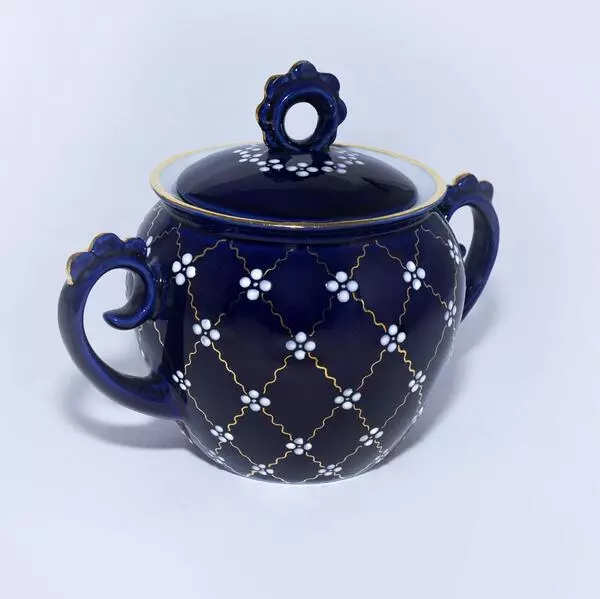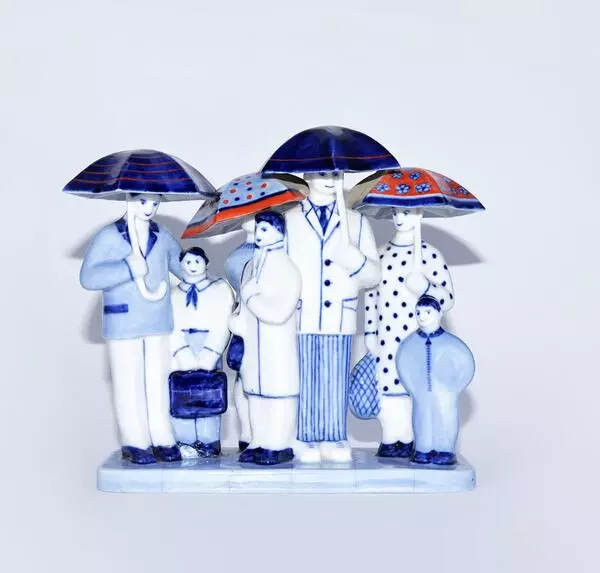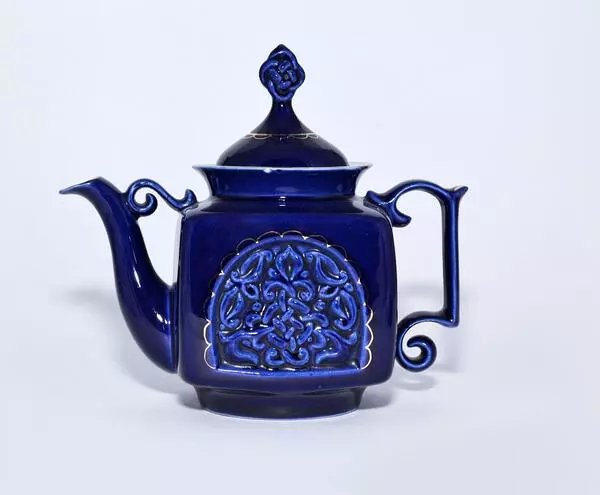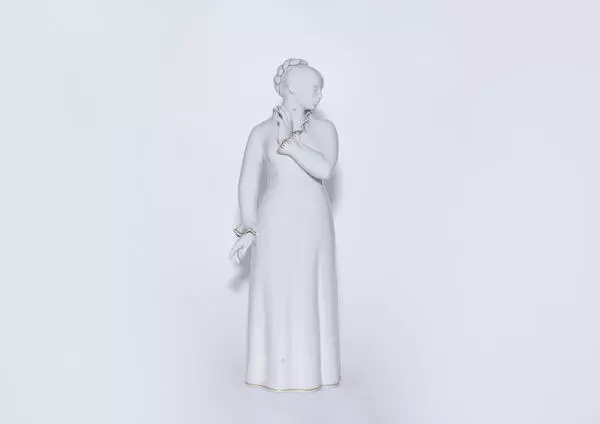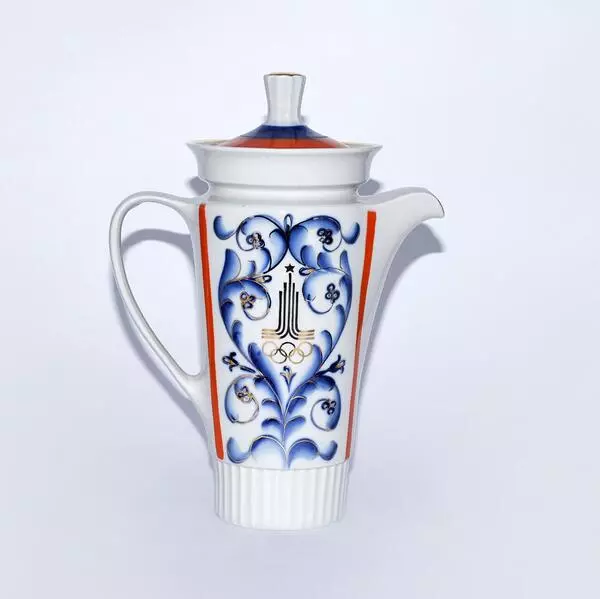The table sculpture depicted a “skomorokh” (buffoon), who took part in theatrical and musical performances. Skomorokhs were invited to feasts to entertain the guests. They organized different games and contests, sang, danced, played musical instruments, gave performances, and told jokes.
In Old Russian society, skomorokhs were very important. They had much more freedom than the others did. For example, they could criticize the authorities and public officials, as well as make off-hand remarks. When Tamara Gavrilova was designing this skomorokh figurine, she researched Russian folklore and the everyday life of the medieval Novgorod.
The painter chose an unusual pose for her figurine — the buffoon is half-lying and half-sitting, putting his hands on the patterned base. The cock sits on his crossed legs — these birds were trained to participate in buffoonery performances. In addition to cocks, geese, goats, foxes, and even bear cubs were involved. The performer’s traditional costume consisted of a bright ornamented shirt, trousers, and a headdress that looked like a tasseled party hat.
There is no exact information as to when buffoonery appeared in Rus’. Researchers found the images of dancing skomorokhs in different places. For example, one of the earliest images was found on frescoes in the Saint Sophia Cathedral in Kyiv, they dated back to the 11th century. In addition, there is a hypothesis that a character of a Novgorod “bylina” (Russian epic story), also known as Sadko, could be a skomorokh. He participated in feasts with his gusli (Russian musical multi-string instrument) and entertained the guests.
The Church was the main opponent of the skomorokhs. Dressing up, masks and jokes were considered a sin connected with pagan rituals. The performances of skomorokhs were called “demonic” and “satanic”. Nevertheless, the nobility and princes used to invite skomorokhs to their feasts for many centuries, and even the strictest church prohibitions could not make them break with this tradition.
Buffoonery played a big role in the formation of the Russian theatre. There were dramatic conflicts, love stories, improvisation, and dialogues revealing the characters in the jokey games and plays of the skomorokhs.
In Old Russian society, skomorokhs were very important. They had much more freedom than the others did. For example, they could criticize the authorities and public officials, as well as make off-hand remarks. When Tamara Gavrilova was designing this skomorokh figurine, she researched Russian folklore and the everyday life of the medieval Novgorod.
The painter chose an unusual pose for her figurine — the buffoon is half-lying and half-sitting, putting his hands on the patterned base. The cock sits on his crossed legs — these birds were trained to participate in buffoonery performances. In addition to cocks, geese, goats, foxes, and even bear cubs were involved. The performer’s traditional costume consisted of a bright ornamented shirt, trousers, and a headdress that looked like a tasseled party hat.
There is no exact information as to when buffoonery appeared in Rus’. Researchers found the images of dancing skomorokhs in different places. For example, one of the earliest images was found on frescoes in the Saint Sophia Cathedral in Kyiv, they dated back to the 11th century. In addition, there is a hypothesis that a character of a Novgorod “bylina” (Russian epic story), also known as Sadko, could be a skomorokh. He participated in feasts with his gusli (Russian musical multi-string instrument) and entertained the guests.
The Church was the main opponent of the skomorokhs. Dressing up, masks and jokes were considered a sin connected with pagan rituals. The performances of skomorokhs were called “demonic” and “satanic”. Nevertheless, the nobility and princes used to invite skomorokhs to their feasts for many centuries, and even the strictest church prohibitions could not make them break with this tradition.
Buffoonery played a big role in the formation of the Russian theatre. There were dramatic conflicts, love stories, improvisation, and dialogues revealing the characters in the jokey games and plays of the skomorokhs.



